The Future of the Wooden Weapon Industry & 2020's price increase
In September 2019, the Horinouchi workshop who held about 40% of the production of all made in Japan wooden weapons, closed its doors forever.
The reasons are both simple and sad:
1 - Japan's aging population, meaning a huge drop in the young workforce (especially when those workshops are located in southern Japan).
2 - Bad wages, that do not motivate to work in this industry (Wooden weapon craftsmen are earning about the average local salary, no more).
3 - A lack of recognition for the quality of their work that does not contribute to motivating the young generation.
4 - And some bad business decisions that led to bankruptcy.
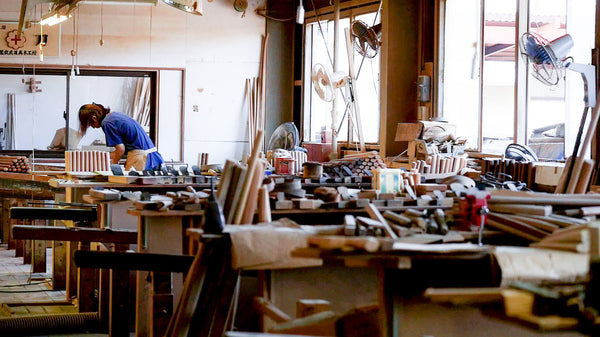
Less and less craftsmen are tempted to work in the industry
Of course, regarding point one, there's no much anyone can do about it. Japan's population is aging, and this won't change anytime soon.
Point four is the responsibility of the workshops, and we can only hope that the remaining 3, Aramaki, Matsuzaki and Nidome will make better choices. However, we can definitely do something about points two and three.
As you know, Seido is spending lots of energy and resources for the promotion of craftsmanship, through blog articles, video interviews, but also through our everyday job that does not only consist in selling weapons but also educating practitioners so they understand what they buy and why they pay the price they pay for made in Japan weapons. We will continue on this path with the hope that the recognition of craftsmen work both leads to the acceptance of higher prices and motivates the younger generation to choose that kind of job for the beauty of craftsmanship.
And here we come to point 2. It is of the utmost importance that workshops increase their prices to a point that will allow them to evolve toward a long-term sustainable model.
This is why we have proceeded to a wide price increase of all wooden weapons in the past months.
In November and December, when we transferred all the models made at the Horinouchi workshop to the others, we discussed the prices for each model with the craftsmen, all of them together, and made sure prices were harmonized and sustainable for them.
In January 2020, we finally increased the prices of all standard/deluxe weapons (Bokken, Jo/Bo and Tanto) with the same logic.
Before the price increase, the Standard Bokken, now priced at 6500 YEN, was priced 5000 YEN. Let's reverse-engineer the cost of this 5000 YEN Bokken:
- 2500 YEN for shipping (which is included in price).
- 1000 YEN (33% margin) for Seido (a final calculation that includes the weapons we rule out during the quality control).
- A few hundred yens for intra-Japan shipping, storage, and taxes.
All of this leaves more or less than 1000 YEN for the craftsman.
If we deduct the cost of the raw material and various maintenance costs, we can estimate that the raw earning for one Bokken is 500 YEN.
Compared to the minimum wage which is around 900 YEN in Japan, it means that a craftsman has 30 minutes to produce one Bokken and earn the very minimum wage, even after decades of training in his crafting art.
Who would want to be a craftsman working in a dangerous and dirty environment all day for earning at best 1000 YEN/hour? No one, of course.
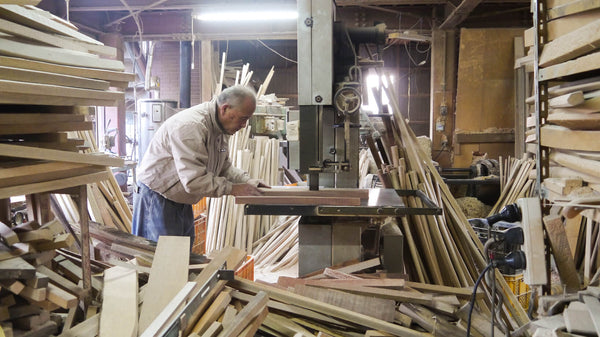
Master Nidome working in his cluttered workshop
As the founder of Seido and as someone with a passion for craftsmanship, my opinion is that craftsmen should at least double their prices.
Of course, from the customer point of view, it may sound unreasonable, but did you know that French, Portuguese or American craftsmen charge from 100 USD (10,000 YEN) to 200 USD (20,000 YEN) for one Bokken, without any third-party involved (direct sale)? Is 65 to 100 USD (worldwide shipping included) too much for a Japan-made Bokken? It's still only half what Western craftsmen charge.
We understand that acquiring high-quality weapons is a sacrifice for many of you and that not everyone can afford such expensive items.
And this is probably partially based on this reason that some of our competitors pressured the craftsmen for more than 20 years so they do not increase their prices. But this is a vicious cycle that can only lead to great losses for everyone: craftsmen, practitioners, the economy and probably even leads to ecological concerns. We have been pushing the craftsmen in this direction for almost a decade now, and if they already made a little step forward a few years ago with our full support, the sudden closing of the Horinouchi workshop shook the whole industry in a way never experienced before.
So now, we're are intensifying our efforts and we started with a significant price increase for 2020, between 50 and 100% for Koryu Bokken (who require much more work), and 20 to 30% for standard/deluxe weapons.

Master Matsuzaki in his workshop
We also expect that this price increase will lead to a slight order decrease, and therefore a decrease in production.
Indeed, all workshops are currently completely drowned under much more orders that they can produce, and some craftsmen already suffered from burnouts the past few weeks.
Decent wages, decent working hours, and the ability to better select the material used (and not just buy as much as possible to produce as much as possible) are our main goals and we will continue to provide full support to all our partner craftsmen until those objectives are reached.
Thank you very much for your understanding!


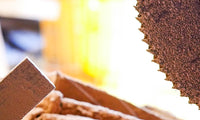
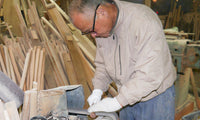
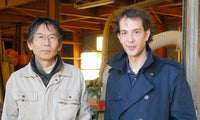
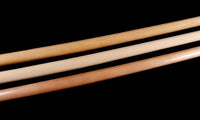
8 comments - The Future of the Wooden Weapon Industry & 2020's price increase
Now that we are almost 4 years past this great attempt at supporting the industry, is there any report as to its success or lack thereof? Would be great to get an update.
Hi Piero
Thank you very much for your support and kind words.
Regarding your proposition, I am afraid we are passed this situation.
The problem is financial, it’s a combination of the lack of natural resources and social issues.
This just may not have any solution. Sadly.
Although we haven’t thrown the towel yet, of course!
These craftsmen and women ought to be designated “living treasures”! In world ravaged by the Covid virus our Aikido Club has been relying heavily on our weapons to help keep us healthy where normal club practice is not possible. Being able to maintain some kind of martial practice and discipline has become even more important than ever.
I wonder if it would be possible to create a fund whereby we can become financial sponsors to these truly heroic and dedicated craftspeople who allow us to practice our various arts with weapons that are not just safe to use but beautiful too!
We cannot afford to take these wonderful people for granted anymore!
Thank you too Jordy for making these products available to us.
Best wishes
Piero Daurat
Airenjuku Dojo
London
England
Dear Mr. Delage,
I thank you deeply all your efforts to save Japanese crafts in this so sad and critical circumstances. I hope consumers appreciate it and we can resist, although the economic situation makes it very difficult for everybody.
With all my appreciation for the artisans and for you.
Yours sincerely,
Dear Mr. Delage,
I thank you deeply all your efforts to save Japanese crafts in this so sad and critical situation. I hope consumers appreciate it and we can resist, although the economic situation makes it very for everybody.
With all my appreciation for the artisans and for you.
Yours sincerely,
Scott,
Thank you very much for your comment.
The answer is pretty simple actually. Japanese craftsmen don’t like the idea of advertising themselves that much.
Historically speaking, it seems true in comparison to European traditions where the names of the craftsmen were really important.
But I also believe that it comes from the fact that for the past 30 years, craftsmen were pressured by retailers to produce more and more quantities for an always cheaper price, which led to a situation they are no longer really satisfied by their work.
This is something you can feel if you read the recent article we published, their interviews on Youtube, but also and mainly all the articles that followed the closing of the Horinouchi workshop last September (2019).
This is why, here at Seido, we believe that we need to help them retrieve their self confidence as part as the solution to the current very difficult situation (that could simply end up with the complete disappearance of wooden weapon craftsmanship).
Since there are only 3 workshops left, and that they pretty much all have the same problems and logic (and they’re actually all good friends), I don’t see any reason to believe that a clearly marked seal would be a proof a quality at this moment (expect maybe for very expensive items of course).
the lack of a clear makers mark…or craftsman stamp on the wooden weapons is an issue ….in determining quality..and maker
the stamp on the end of the weapon is barely noticible in most cases….. and seems to be an afterthought…im sure you have the reason for this…I would love to know
if we are going to be charged more there should be a VERY clear , distinguishable…burnt in engraving….identifiying the maker,shop, etc.
A better makers stamp is a sign of better quality..?
at least perceived
please educate me on this subject
warmest regards
scott Howard
Well hallelujah to that, Monsieur Delage!! I’d have to say that Japan and all us budoids are sure as hell lucky to have you folks there in Japan saving for the next generation something that they’ve been neglecting in their hyperdrive cruise into unsustainable megamodernity. I have some questions about the ecological situation with the strengthening climate apocalypse etc— is it true that Japanese white and red oak supplies are growing scarce? And if so what is the future prognosis? Will they switch to another wood, like the beech and ash that some European craftsmen use? And how do those woods compare to the Japanese oaks? Thank you very much for all you do, and may the gods and spirits bless your work and swiftly bring enlightenment, impotence, or death to all who harm our Mother Earth.